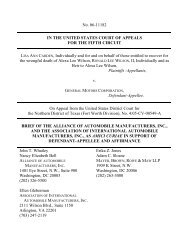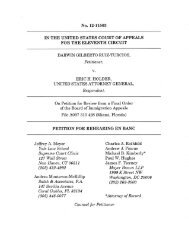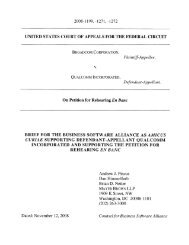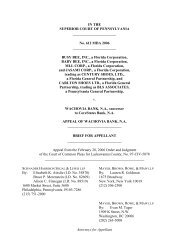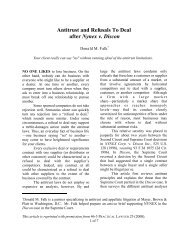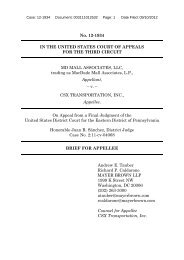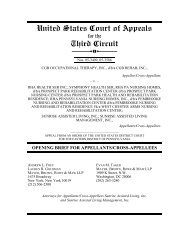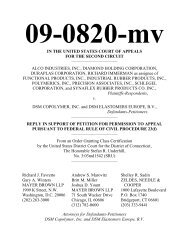No. 5-99-0830 IN THE APPELLATE COURT OF ... - Appellate.net
No. 5-99-0830 IN THE APPELLATE COURT OF ... - Appellate.net
No. 5-99-0830 IN THE APPELLATE COURT OF ... - Appellate.net
Create successful ePaper yourself
Turn your PDF publications into a flip-book with our unique Google optimized e-Paper software.
that are incongruous with the efficiencies expected in a class action.” Id. at *4. Because<br />
there was no way to tell, without looking at each individual vehicle, whose vehicles were in<br />
fact delaminating or had delaminated — let alone why the delamination had occurred — the<br />
court held that class certification was improper. The same result should have been reached<br />
here, where it is impossible to tell without looking at each individual repair which members<br />
of the class had standing to seek damages for any alleged breach of contract. See Kelly v.<br />
Sears Roebuck & Co., 308 Ill.App.3d 633, 644 (1st Dist. 1<strong>99</strong>9).<br />
Plaintiffs tried to get around the threshold problem created by their inability to<br />
identify when non-OEM parts were actually installed by claiming that the mere specification<br />
of a non-OEM part constituted a breach of contract entitling the policyholder to so-called<br />
“specification” damages. But there was no breach of contract by State Farm so long as the<br />
insured’s vehicle was restored to pre-loss condition, which, under plaintiffs’ theory, use of<br />
OEM parts accomplished. Moreover, no principle of law allows a plaintiff who did not<br />
suffer any real harm to recover damages for a breach of contract. Plaintiffs’ own expert<br />
conceded that their theory of specification damages made no economic sense precisely<br />
because policyholders who received OEM parts at no additional cost could not claim to have<br />
suffered any loss as a result of the specification of non-OEM parts. R. 7222-23. That<br />
plaintiffs were forced to rely upon such a far-fetched damages theory in order to deal with<br />
their inability to identify who had received non-OEM parts should have been a clear signal<br />
to the circuit court that this case was not appropriate for class treatment. See Broussard v.<br />
-37-



